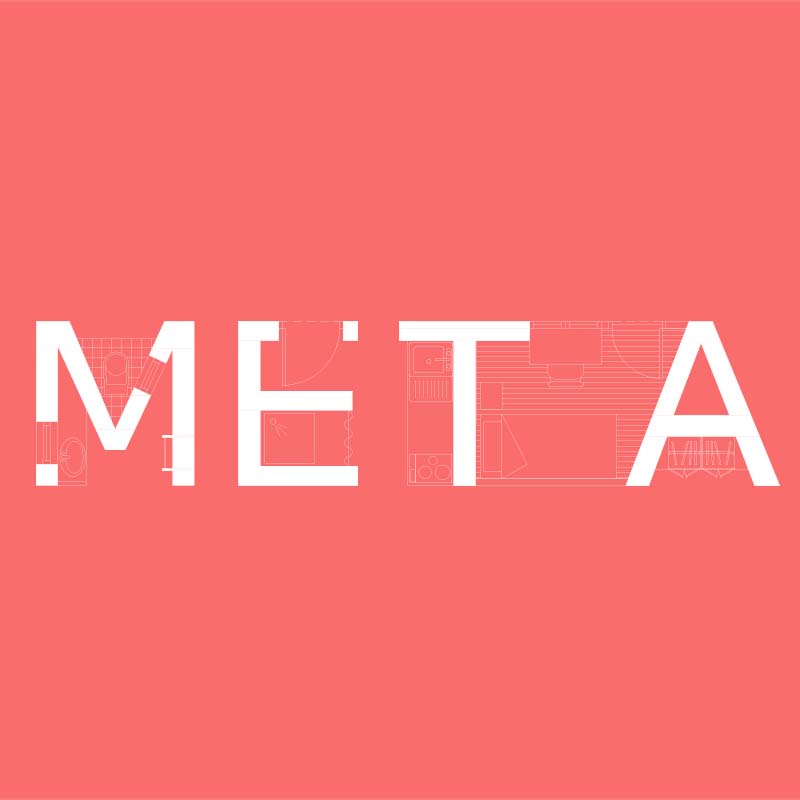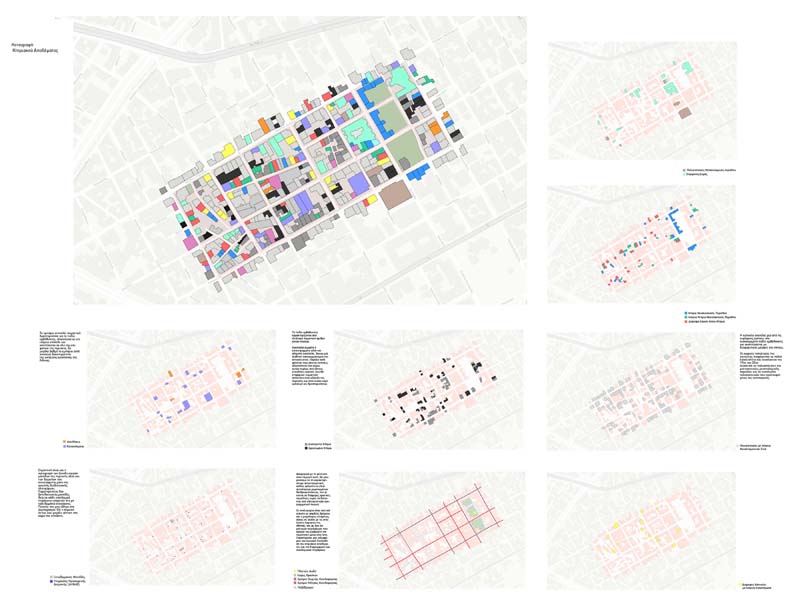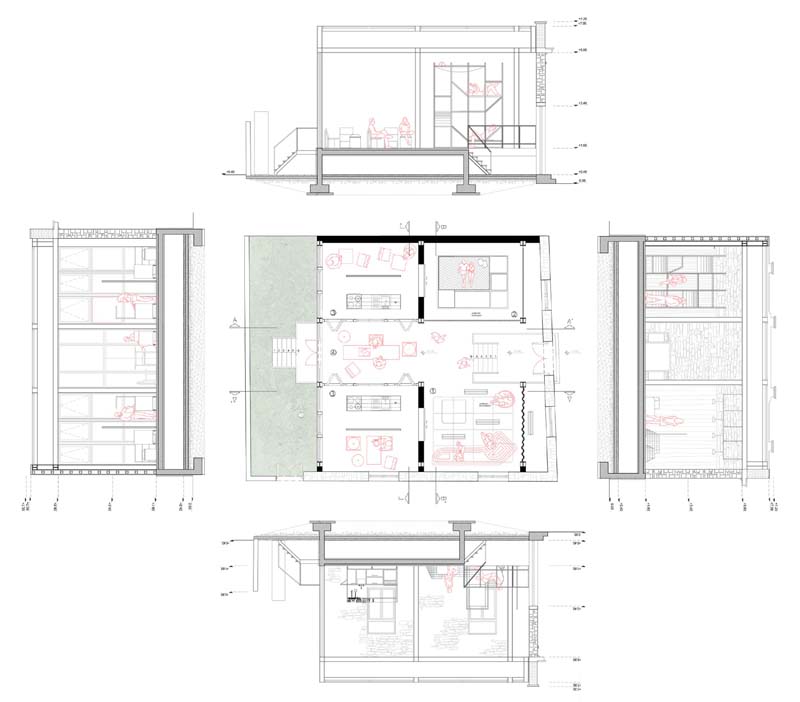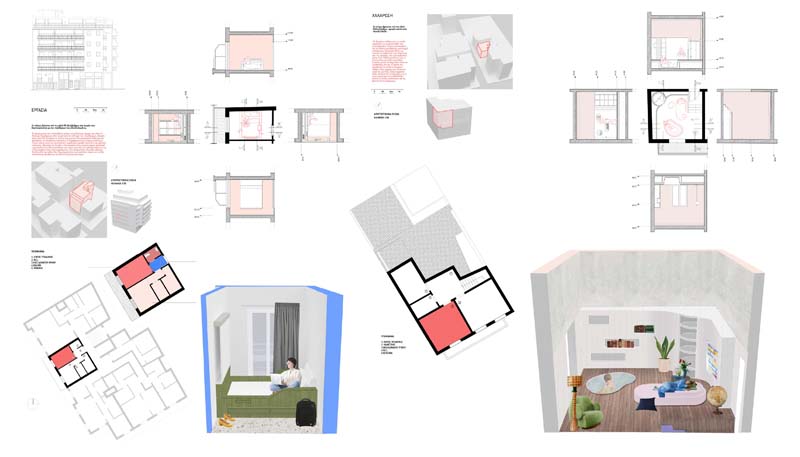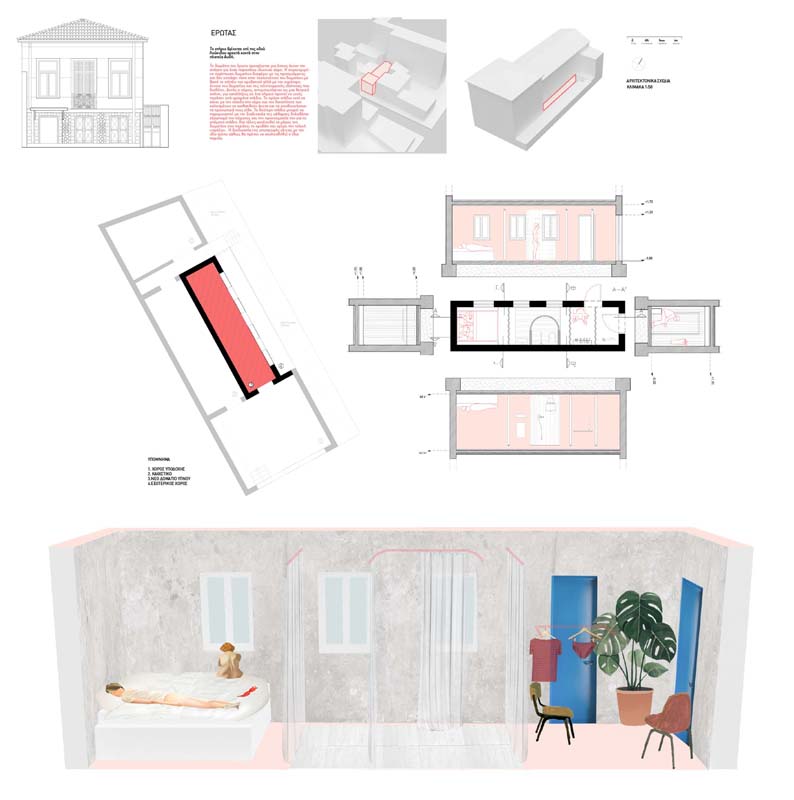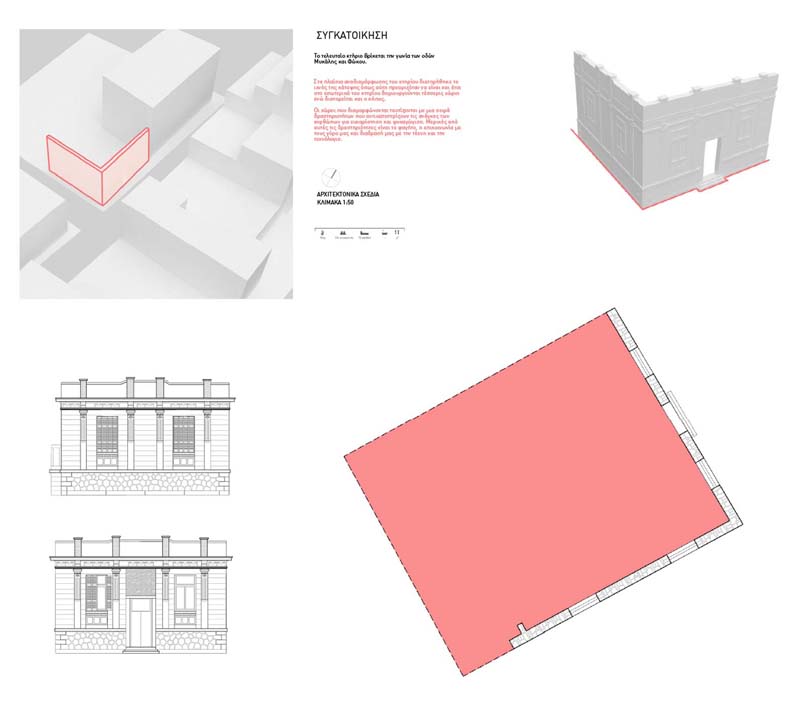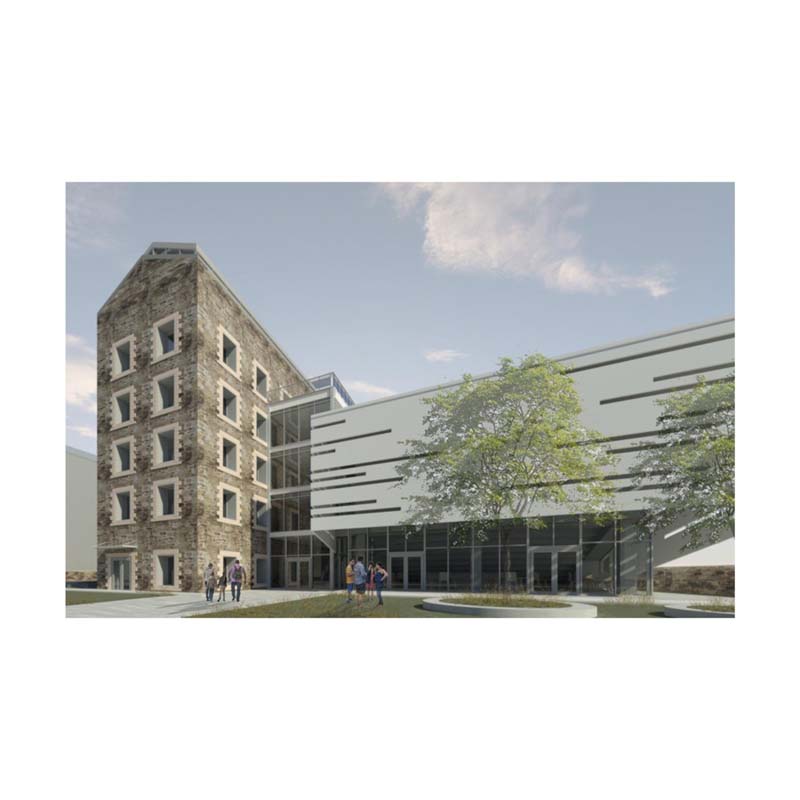

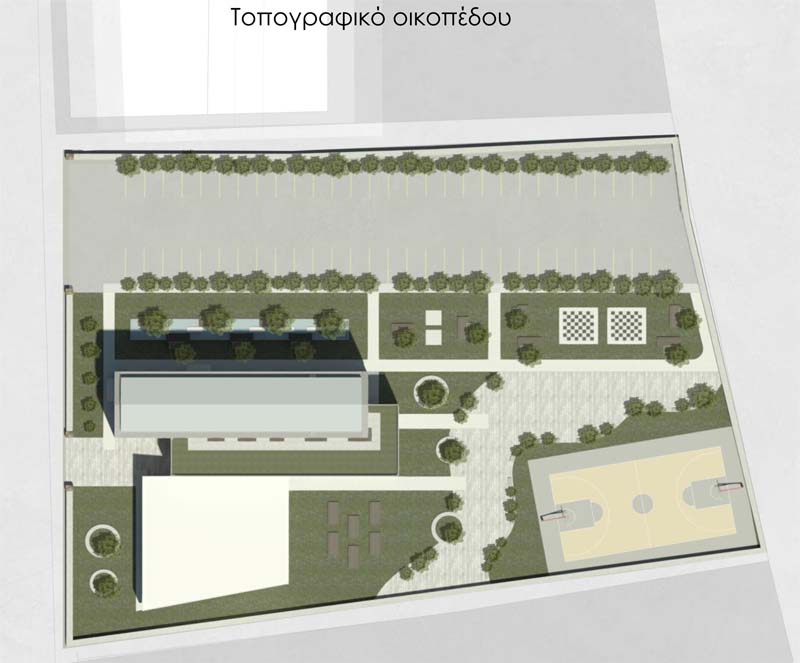

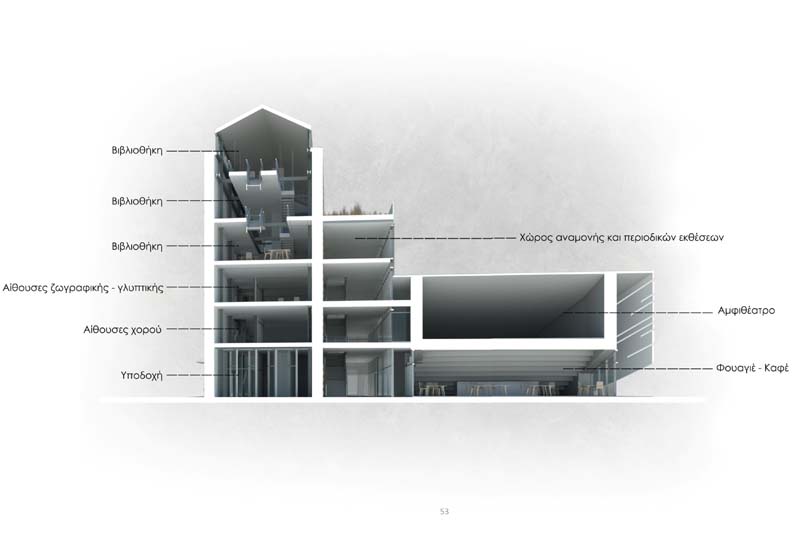

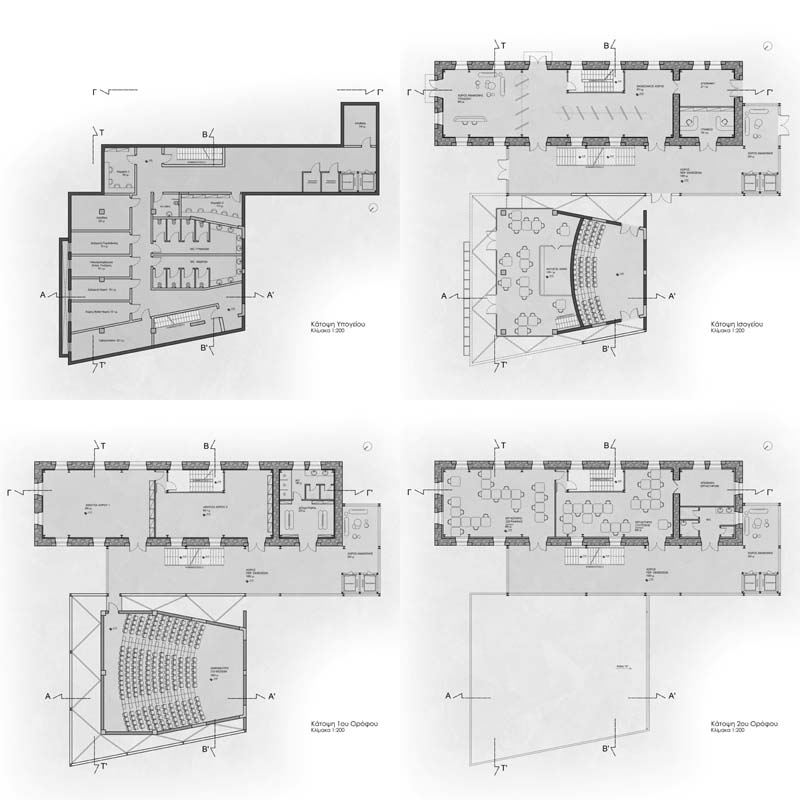

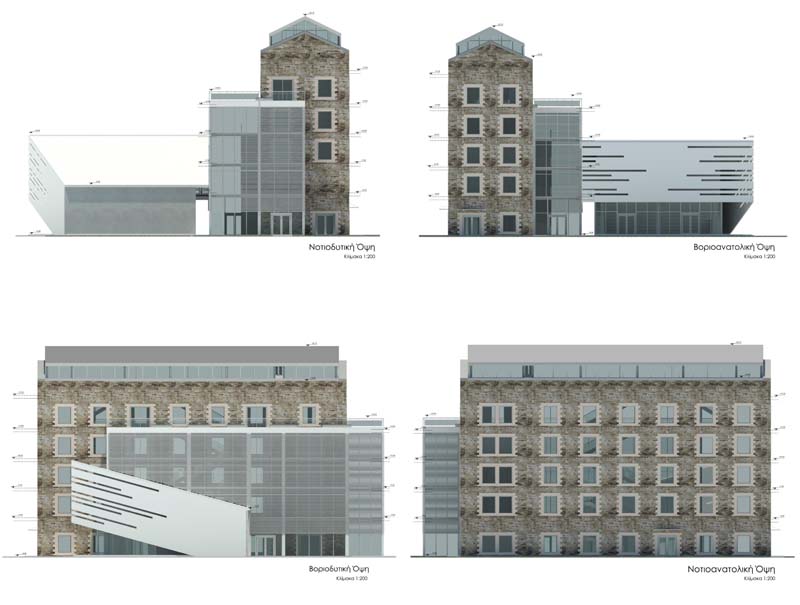

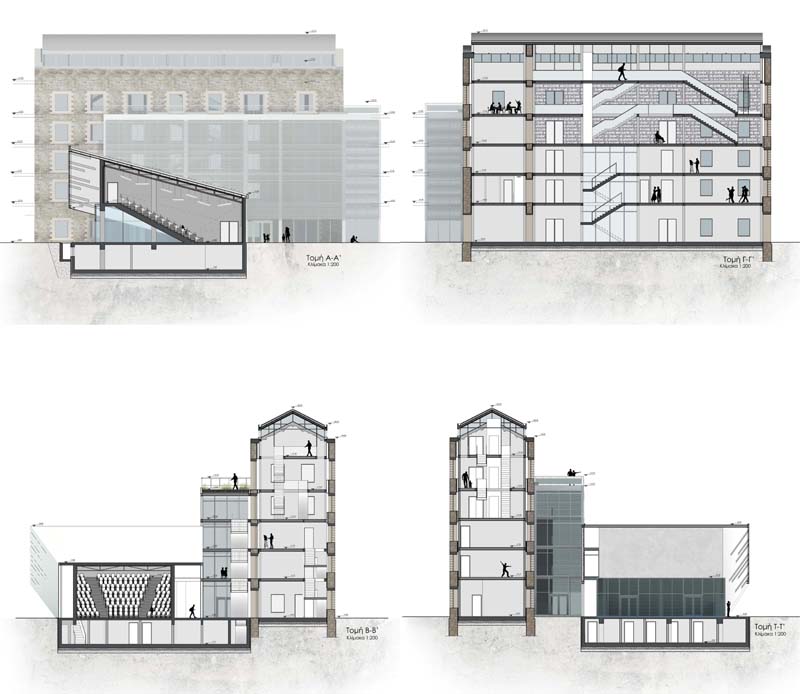

This diploma thesis concerns the restoration of the Valtsanis Mill located at the western entrance of Thessaloniki. It is negotiating the reuse of a historic industrial building in the city with the aim of reintegrating it and upgrading the area. The new use that will be given is a Youth and creative employment center.
The building program of the youth center is divided into three zones. The first zone concerns the existing stone building and has dance halls, sculpture and painting rooms, a three-storey library, an exhibition space. The second zone concerns the glass addition building, next to the existing stone building. This building is basically used as the main staircase, also houses waiting areas and individual spaces for periodic exhibitions. Finally, the third zone concerns a second addition building next to the glass building. This building houses an amphitheater with its foyer - cafe. The amphitheater can host from artistic performances to conferences.
Regarding the materials of the composition, the stone facades of the already existing building are combined with the metal, concrete and glass.
Emphasis was placed on the surrounding area of the building. An interactive park was designed, which combine green spaces, with paths and paving, as well as with outdoor activities. The outdoor area includes a summer cinema and chess, an outdoor music game and a basketball court. Benches and trees are placed throughout the outdoor area with the aim of shading, but also the creation of a pleasant microclimate, to which the existence of the water element in the form of a small lake also contributes.
In the southeastern part of the plot are located (58) car parking spaces in order to facilitate the visitors and employees of the building.
Supervisors: Manolidis Kostas, Adamakis Kostas
Reference Number: 928
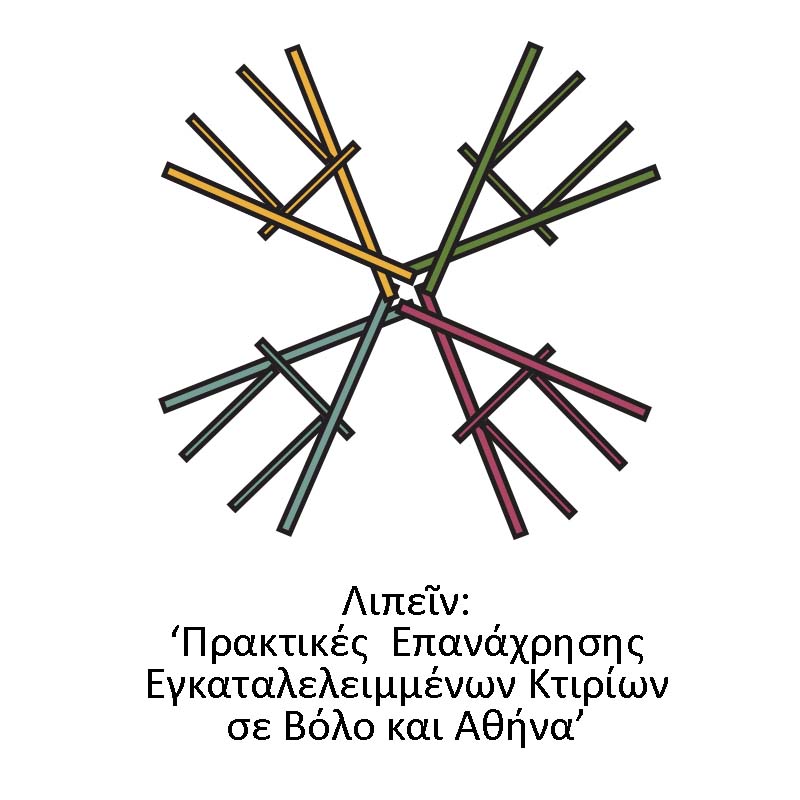

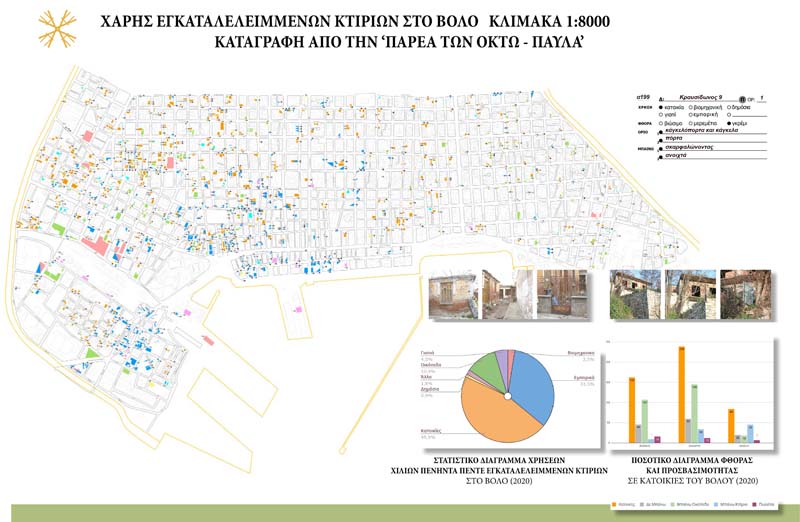

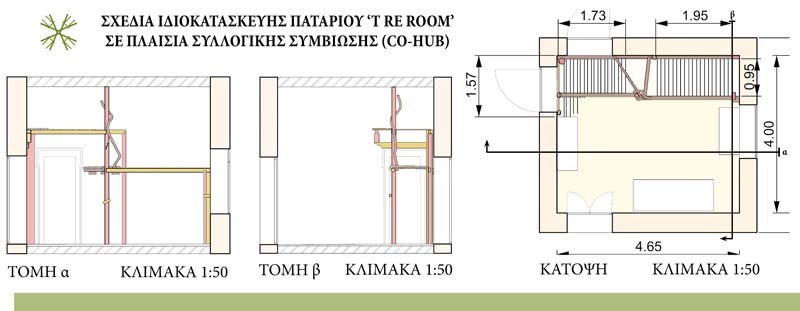



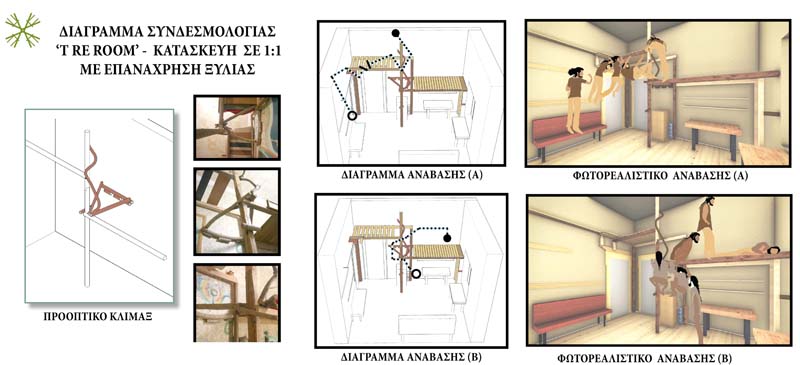

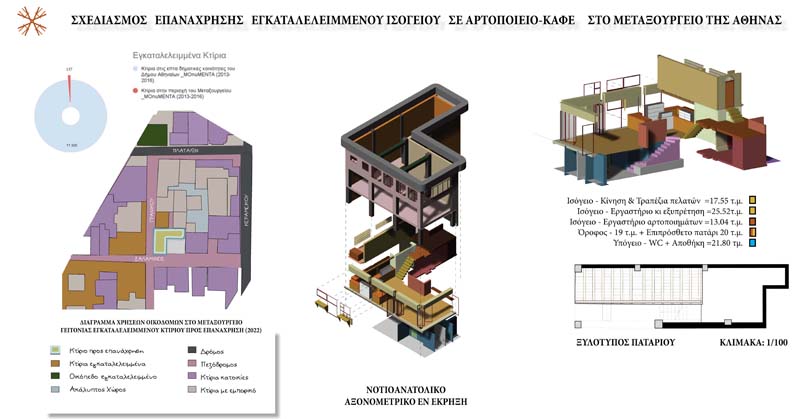

What is abandoned? Why do they exist and how can they be used? Both the examples of Volos and Athens, note a large stock of abandoned buildings, reminding us of the need for feasible and applicable practices for their reusage. Along with a methodology for their utilization and recording, this dissertation presents a DIY construction of a wooden loft (1: 1), during a co-hab in a house of Volos. Lastly, with reference to the abandoned in Athens and specifically in the area of Metaxourgeio, a design proposal is presented for the reuse of a building, in a bakery-cafe.
Supervisor: Kotionis Zissis
Reference Number: 950
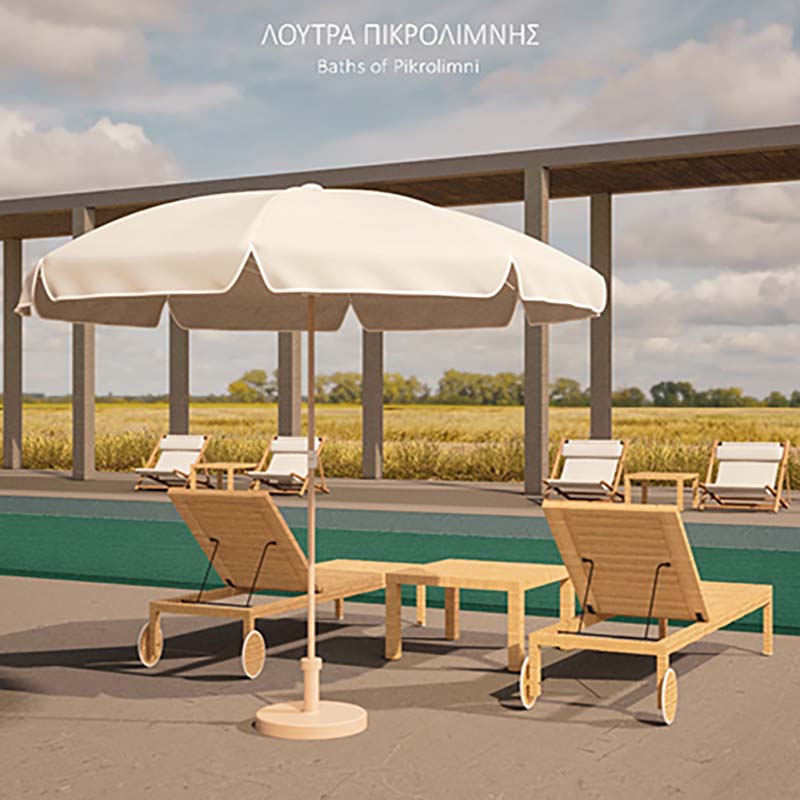

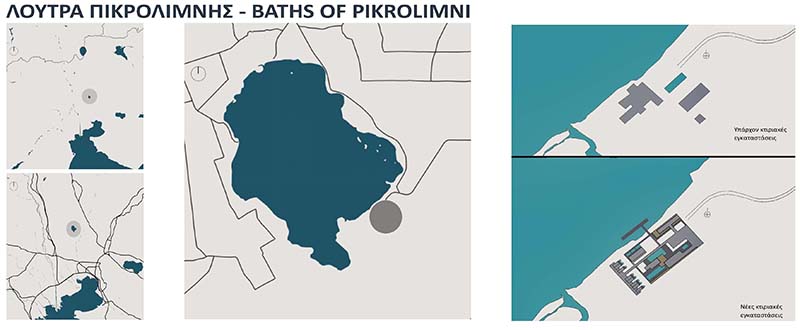

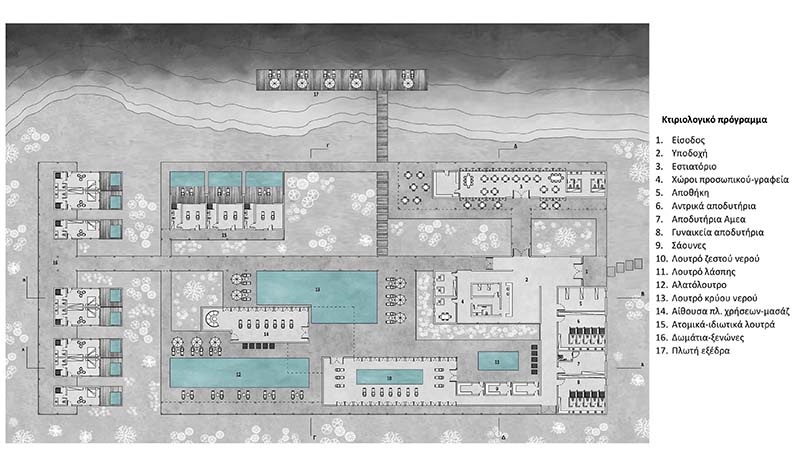

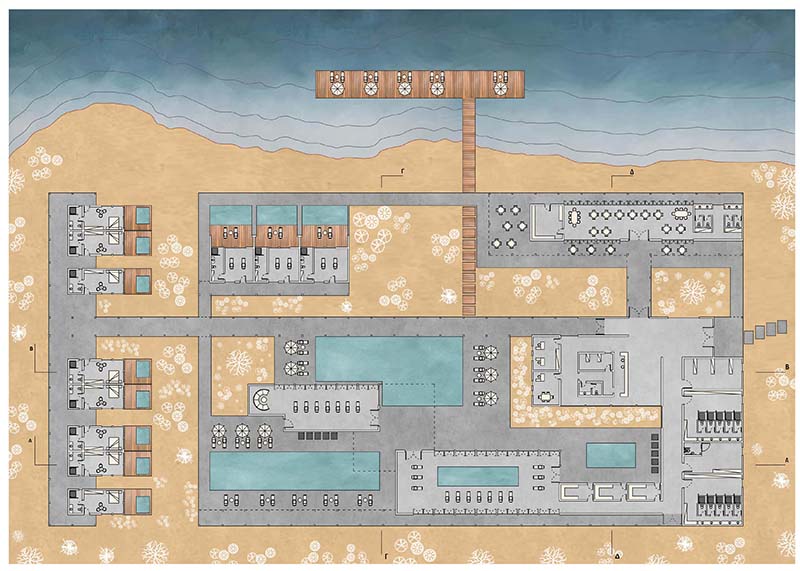



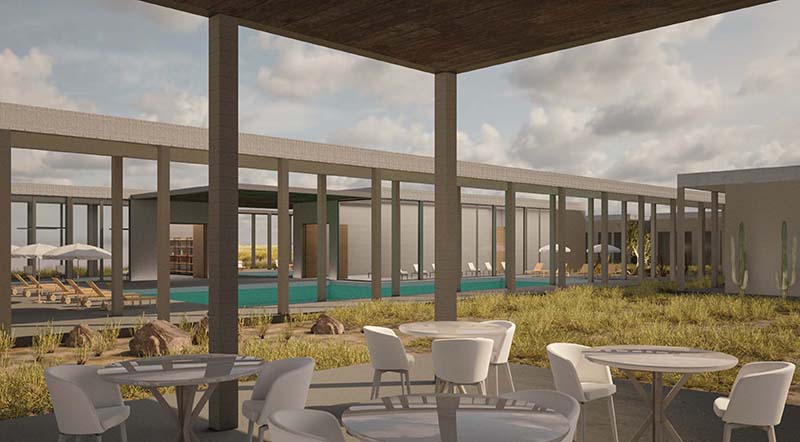

This thesis deals with the redesign of the bathing facilities in the area of Picrolimni Kilkis. Picrolimni is an area of special natural beauty, with famous waters rich in natural sediments and high salt content. The baths have all those natural characteristics that could turn the area into a pole of attraction and development if the appropriate infrastructure is in place. The work comes to propose a design solution for modern building bath facilities in which visitors will be able to experience a holistic bath therapy experience. At the same time and beyond their bath, they can enjoy fine local flavors in the restaurant, while if they wish, they can combine their bath therapy with a stay in the guesthouses of the facilities. The design proposal talks about respecting the natural landscape of the area and the ways in which this comes to be displayed through the design of the bathrooms. Furthermore, reference is also made to energy solutions through which the building facilities will be able to be energy independent, drastically reducing their environmental footprint and their dependence on the energy network. In conclusion, the work tries to analyze the reasons why it is considered necessary to redesign the bathing facilities of Picrolimni and how they can develop into a point of reference and regional development.
Supervisor: Stylidis Iordanis
Reference Number: 976
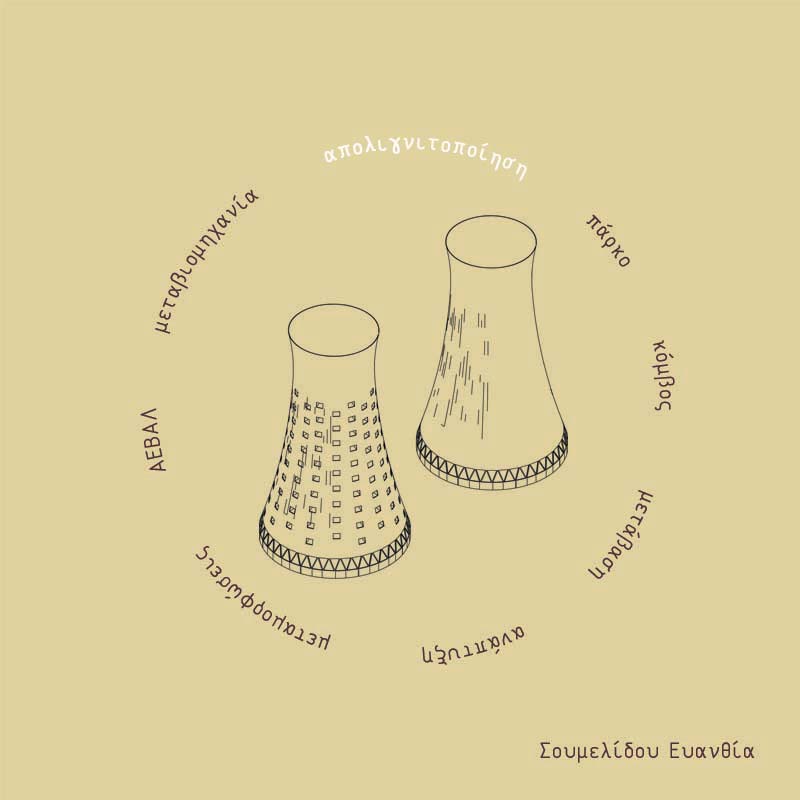

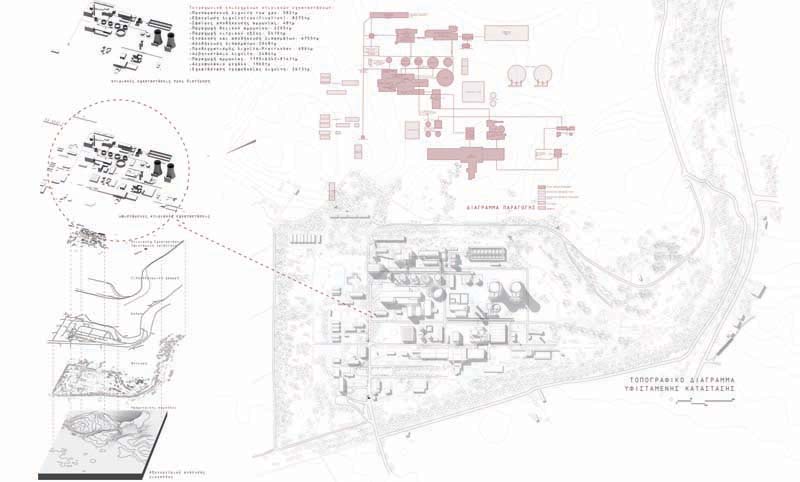

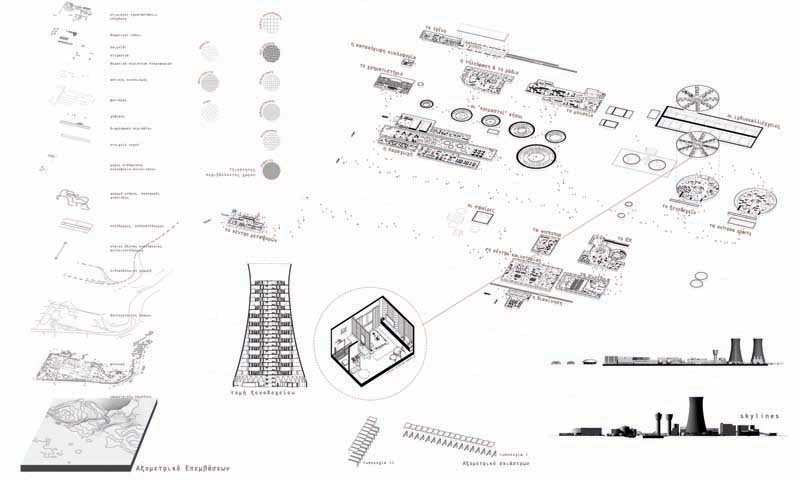

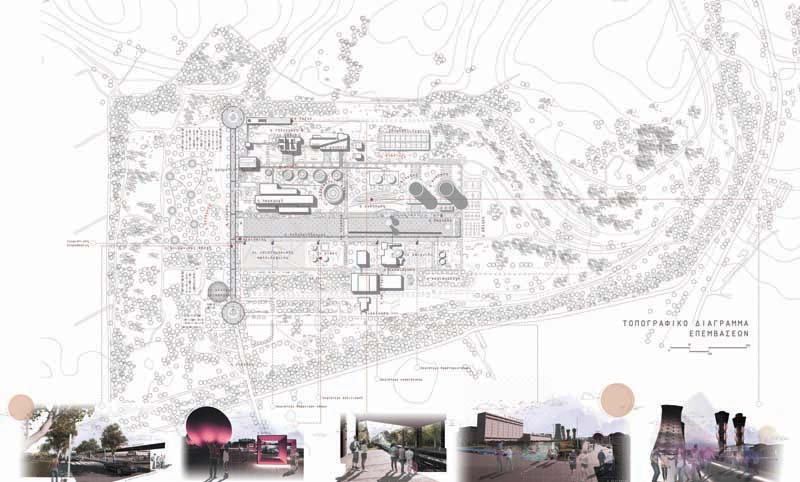

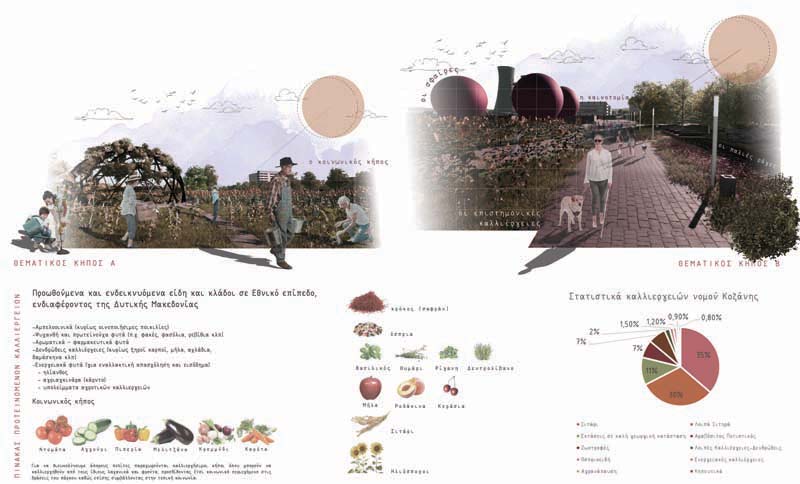

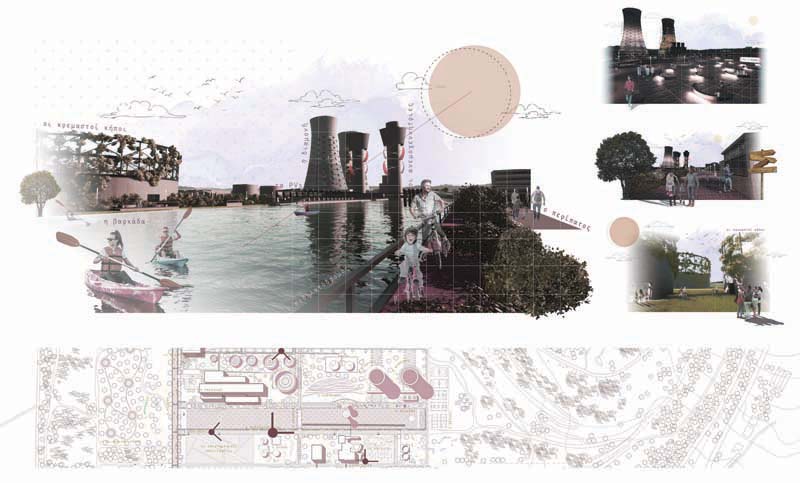

The region of Western Macedonia is directly experiencing the effects of a rapid de-lignification with the permanent closure of all lignite power plants. It is therefore imperative to try to change the productive model of the region and mitigate its effects through a strategic planning that includes attracting investments with specific and enhanced incentives for them.
Emphasis is placed on the primary sector of the region with the production and distribution of local products, on the secondary sector with a fundamental pillar the development of Renewable Energy Sources and finally on the tertiary sector, which is based on tourism development, with emphasis on industrial tourism and ecotourism, as well as research in academic institutions and research centres.
Through a new type of mining, that of ideas, knowledge, energy, we are entering an era that is a "Node of Development" of Western Macedonia. Memory, Production and Development Line are layers of our own mining with respective zones of education, work, leisure, information, research and tradition. Organic routes accompany the plot, meeting the "heavy" industrial design, creating different experiences, strengthening the intersection of the former industry with the new era.
Supervisor: Papadopoulos Spiros
Reference Number: 957
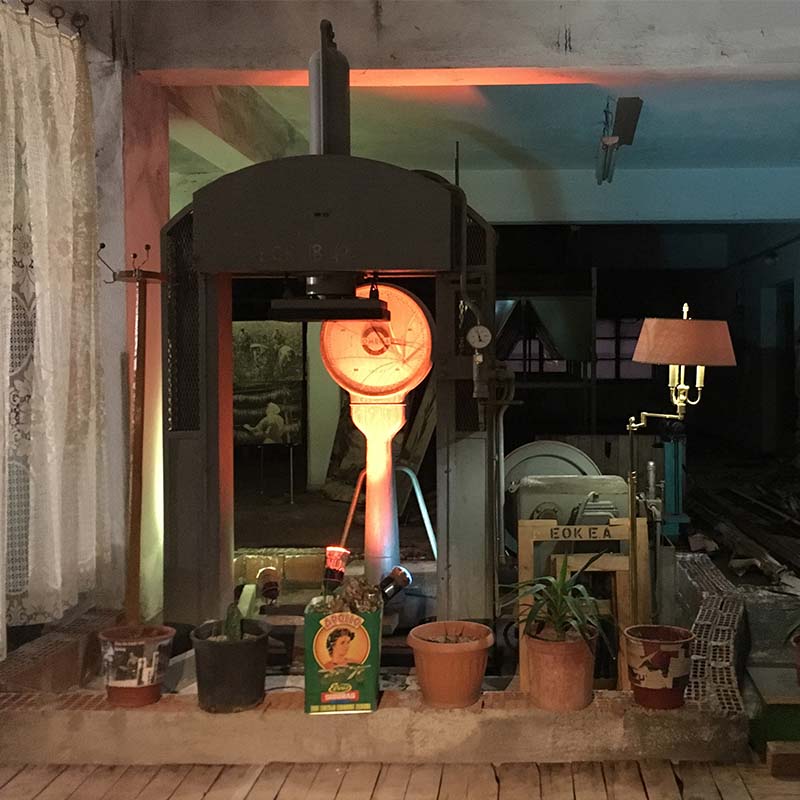

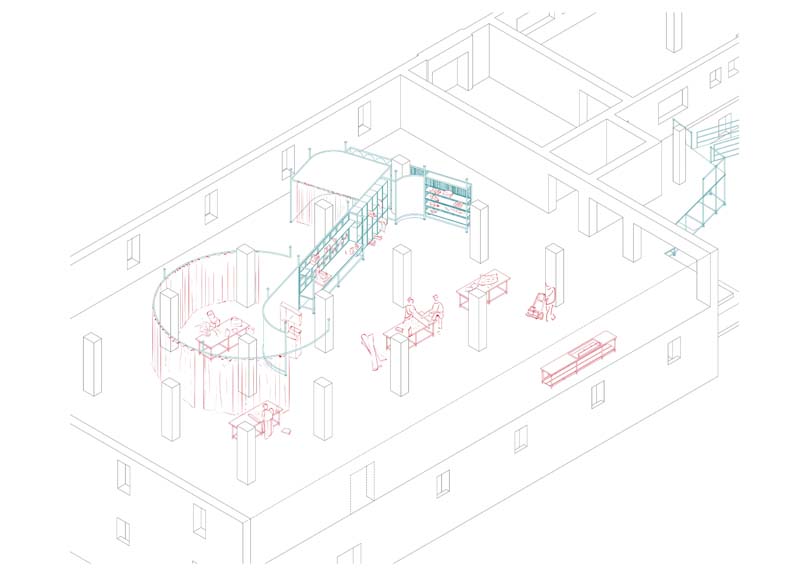

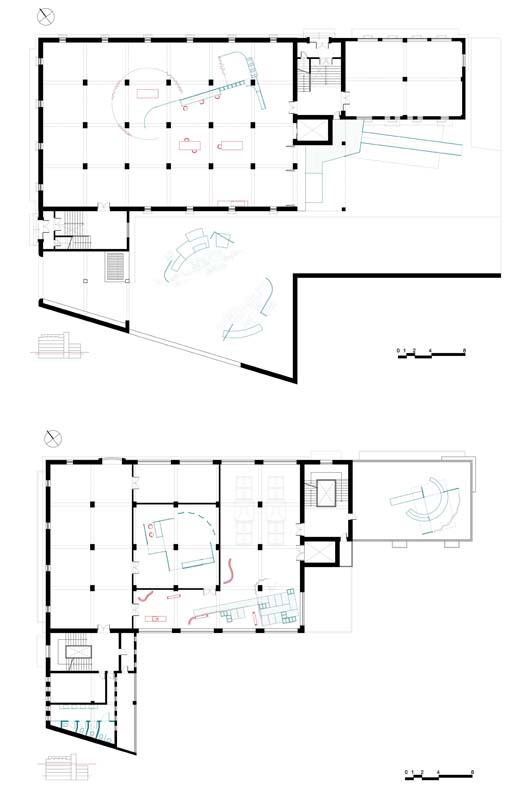

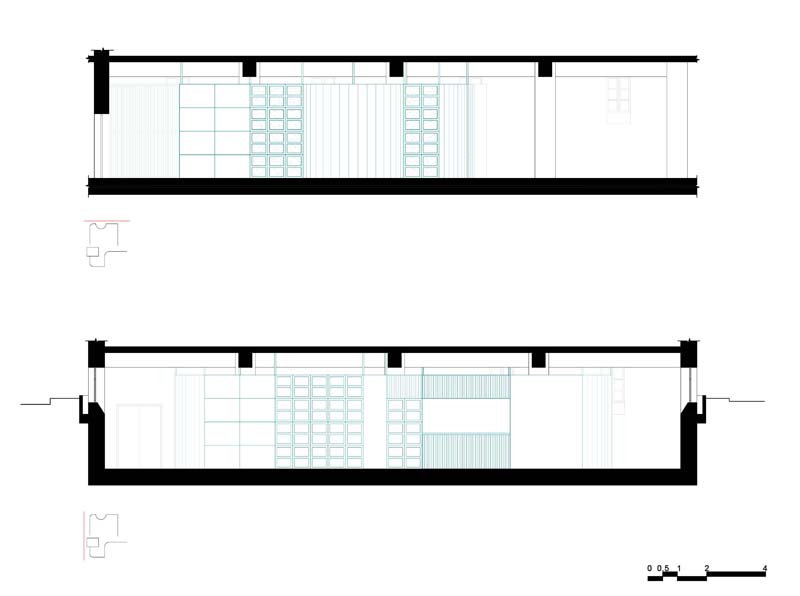

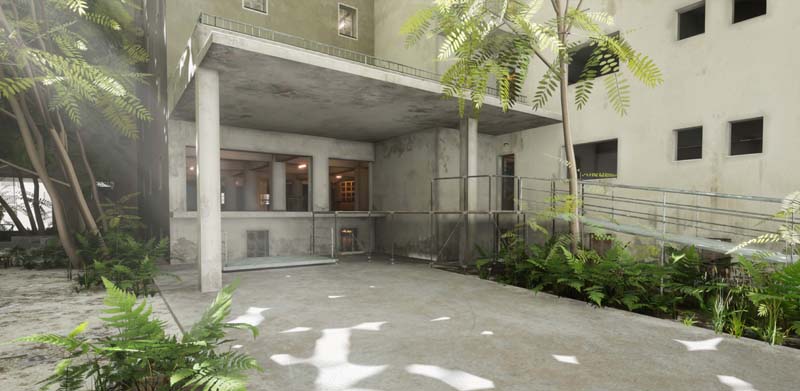

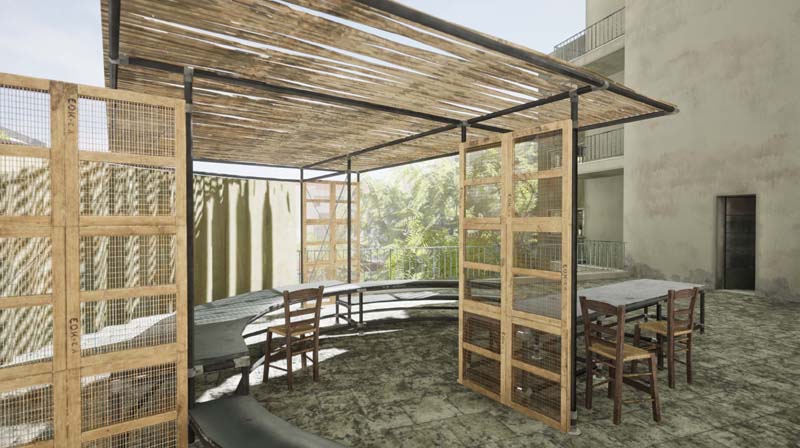

The architectural proposal of this thesis, concerns the management of the abandoned tobacco warehouse of the National Tobacco Organization, which is located in the center of Volos. Our theoretical framework is initially based on recordings and interpretations that we produced through a group of students named Center for Architectural Hysteria and Other Stuff (2020). For its design, we draw inspiration on the reuse of materials from abandoned buildings and from the city's stock and rely on the construction techniques we have mastered from our experience over the years at the Wood and Metal Processing Lab of the Department of Architecture, University of Thessaly. As designers, we feel the need to consume (building) in a controlled and sensitive way. In our opinion, the architectural qualities that we are interested in examining in this thesis are based on the processing and reuse of materials, in a way that minimizes our ecological footprint, to the extent that our -for now- know-how allows us to do so. As a design principle, we set intermediate scale structures, which we take care to place on each floor in such a way that they are always at a distance from the perimeter walls and the frame of the tobacco factory. By extension, we propose that the building be managed by an organized architectural collective, interested in engaging both in the self-production of its laboratory space and in the city's individuals who may be interested in training and engaging in small-scale construction. Furthermore, in order for the space to incorporate more needs beyond making, we propose that the building be more than a workshop, but an open cultural space in which people can enjoy and express themselves freely. Thus, the open structure we propose includes complementary programs such as a theatre stage, dance, exhibition and seminar spaces, spaces for simple discussions and symposia, as well as accessible reading rooms, referring to those people interested in experiencing a participatory environment.
Supervisors: Gavrilou Evelyn, Mitroulias Giorgos
Reference Number: 961
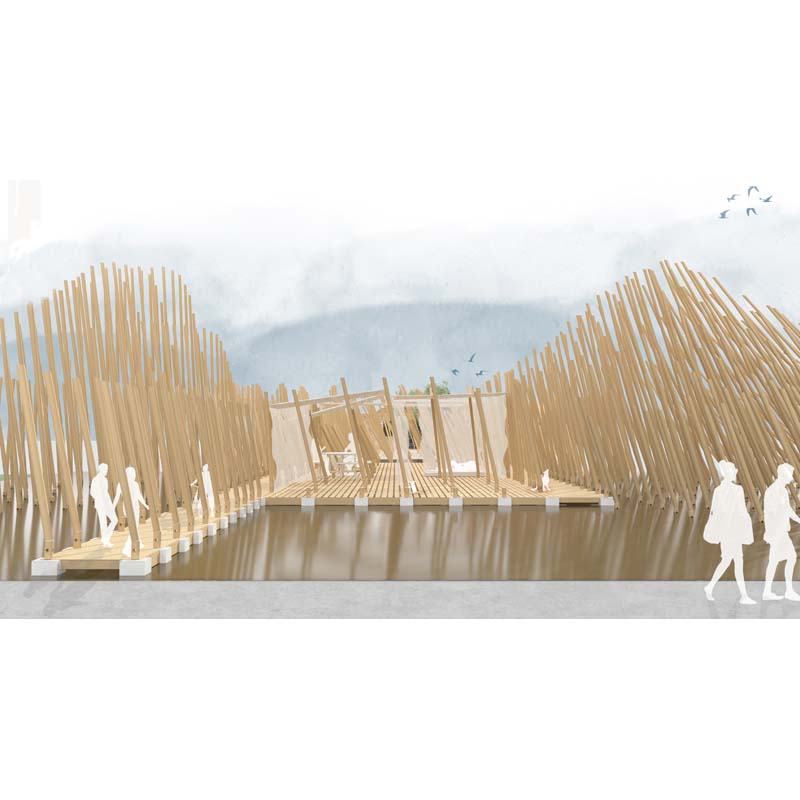

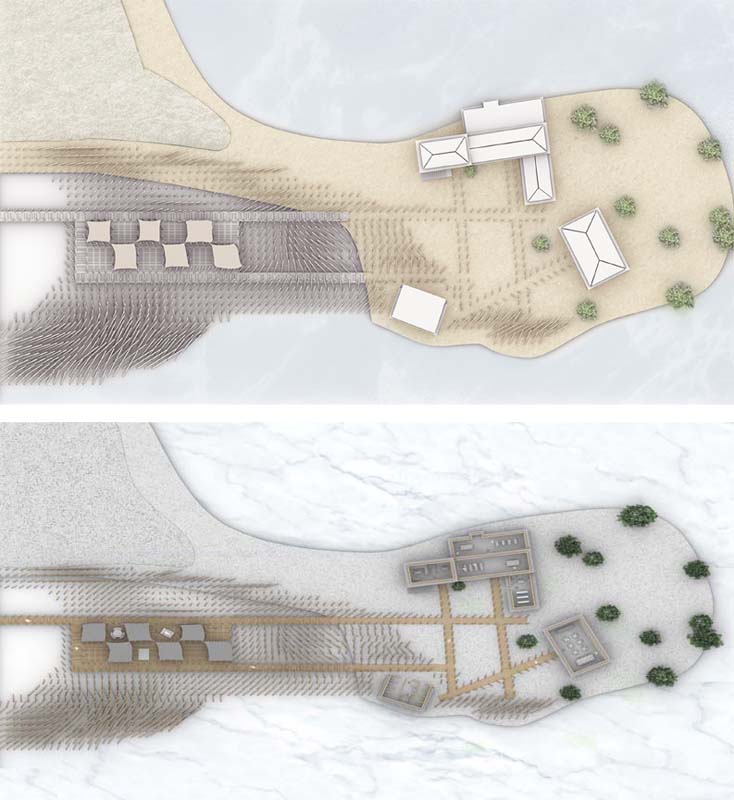

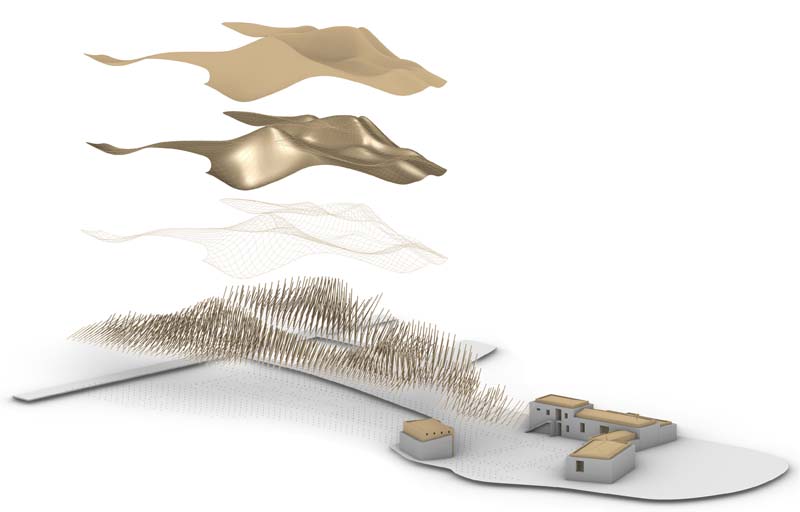





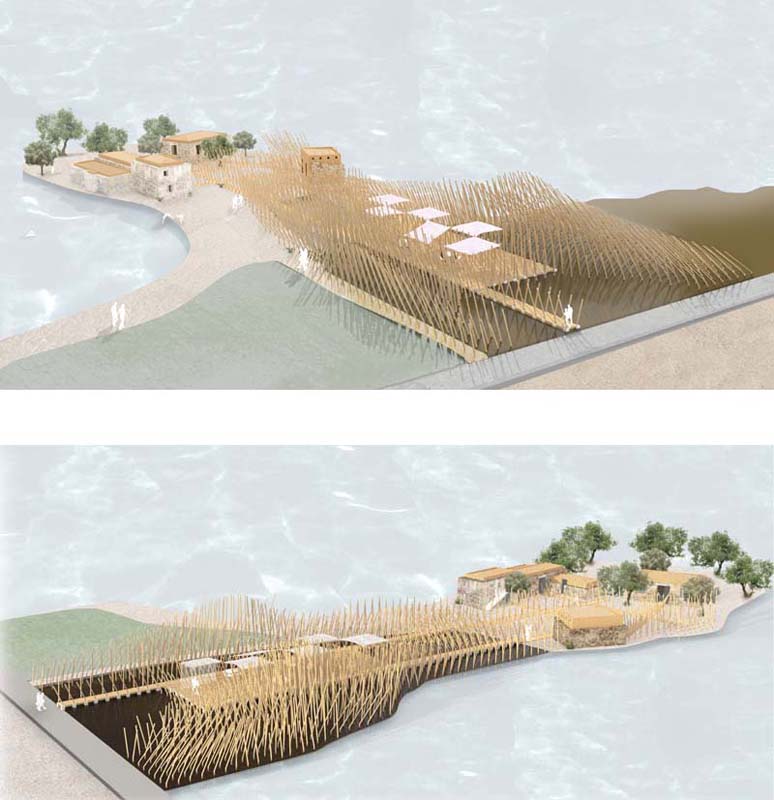

The "Metochi" of the Holy Monastery of Xenia is located in the area of Nies in the Prefecture of Magnesia and is a few kilometers from Almyros. It is located on a small characteristic peninsula, inside the Pagasitic Gulf. Due to the dense planting of olive trees, the Holy Monastery, in its effort to exploit them, built some auxiliary spaces by the sea, in order to collect, process and store the products. Metochi operated for many years as an olive mill by the monks themselves but in the process was abandoned.
The proposal aims at the connection of people with nature. The micro-community that characterizes life in Metochi was the occasion for the restoration and reuse of the existing buildings to highlight aspects of olive tourism, in order to attract, initiate and educate visitors in the world of oil. Inspired by the terrain of the area, some new constructions are also proposed for the purpose of temporary residence, which seek to recreate a natural environment. The project aims, through the special and automated design language, to be a pole of attraction for the locals but also for the visitors or tourists who wish to experience.
Supervisor: Psychogyios Dimitris
Reference Number: 944
The object of the present work is the design of a theater museum and a closed, indoor theater, in the municipality of Heliopolis, in the prefecture of Attica.
The municipality of Heliopolis has a large outdoor theater, the Alsos Theater «Dimitris Kintis», in which a number of events are organized during the summer season. So far no one was able to send in the perfect solution, which is not strange. The idea for this dissertation arose from this need.
In order to properly and comprehensively study the design of the required building program, visits were made to museums and theaters in Athens.
Also the collection of the necessary data emerged from the research in the town hall of Heliopolis as well as in the technical service of the municipality of Heliopolis. The historical archive of the municipality collected a lot of historical information and rich photographic material, which depicts what the city was like in the past.
An accurate topographic copy and additional technical-legislative data concerning the study area were provided by the technical service of the municipality.
Thanks to the interviews provided by residents of Heliopolis, their needs were realized and how they envision a public space, capable of housing their entertainment activities.
Specifically, the work includes:
a) Historical data about Heliopolis and photographic material from the city.
b) Elements for the design of the city, illustrated with the help of maps.
c) Initial ideas for the design of the building.
d) The final plans of the building.
The aim of the work is to design a museum-indoor theater, which will be a point of concentration and relaxation. A building integrated in the urban fabric, with easy access from all parts of Heliopolis, that meets and serves the needs of its residents.
Supervisor: Kanarelis Theoklis
Reference Number: 942


